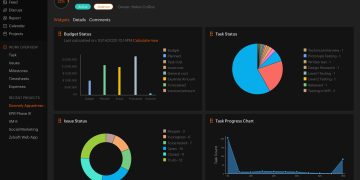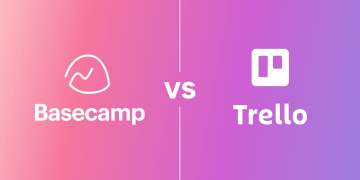In today’s fast-paced corporate ecosystem, “burnout” has shifted from a fringe concern to a mainstream workplace crisis. Employees in high-pressure environments—from tech startups racing against venture capital deadlines to law firms juggling complex litigation—face relentless demands that strain their mental, emotional, and physical well-being. The stakes are high: decreased productivity, high turnover rates, and diminished creativity all point toward the silent epidemic of burnout. Against this backdrop, tools like Basecamp have emerged not merely as project management software but as potential lifelines to sustain employee health, engagement, and resilience.
This article explores whether and how Basecamp can help prevent burnout, combining insights from organizational psychology, productivity science, and technology design. Along the way, we will dissect Basecamp’s features, examine high-pressure work environments, and provide practical strategies for leveraging software to reduce stress and increase efficiency.
Understanding Burnout in High-Pressure Environments
Before evaluating the role of Basecamp, it is crucial to understand what burnout really is. Burnout is more than feeling tired after a long day—it is a chronic response to prolonged workplace stress characterized by three primary dimensions:
- Emotional Exhaustion: Feeling drained, unable to cope, and mentally fatigued.
- Depersonalization or Cynicism: Detachment from work, colleagues, or clients, often manifesting as a sense of meaninglessness.
- Reduced Personal Accomplishment: A sense of ineffectiveness and lack of productivity, leading to decreased motivation.
High-pressure environments amplify these symptoms. Consider a typical scenario in a tech startup: multiple projects run simultaneously, deadlines are aggressive, team members are spread thin, and communication is fragmented across emails, Slack messages, and sporadic meetings. Under such conditions, employees often work in reactive mode, constantly shifting priorities and managing interruptions—a recipe for chronic stress and eventual burnout.
The cost is enormous. According to studies, organizations lose billions annually due to decreased productivity, absenteeism, and employee turnover. Beyond finances, the human toll—mental health challenges, strained relationships, and career dissatisfaction—cannot be overstated. Thus, the need for practical interventions is urgent.
Project Management Tools as Burnout Prevention
Technology is often blamed for burnout—think endless notifications, micromanagement apps, and the always-on culture—but the right digital tools can have the opposite effect when designed intentionally. Project management platforms like Basecamp are more than task trackers; they can serve as stress buffers if they simplify work, enhance clarity, and support autonomy.
Key mechanisms through which tools reduce burnout include:
- Centralization of Information: When tasks, discussions, files, and timelines are consolidated in one place, employees spend less energy searching for information, freeing mental bandwidth for actual work.
- Clear Prioritization: Tools that allow managers and teams to define priorities reduce decision fatigue and anxiety over “what to do next.”
- Asynchronous Communication: Minimizing unnecessary meetings and allowing employees to respond on their own schedules helps prevent exhaustion.
- Transparency and Accountability: Visibility into progress and responsibilities reduces stress caused by ambiguity and uncertainty.

Basecamp, in particular, emphasizes simplicity and focus over feature bloat, aligning with principles of cognitive ergonomics—designing systems that respect human mental limitations. But to fully understand its potential for burnout prevention, we must dive into the platform’s core features.
Basecamp Features That Combat Burnout
Basecamp differentiates itself from other project management platforms like Asana, Jira, or Trello through its minimalist design and team-centric philosophy. Several of its features are particularly relevant to reducing workplace stress:
1. To-Do Lists
Basecamp’s to-do lists allow teams to break projects into actionable, manageable steps. Employees can see exactly what tasks are theirs, which helps reduce cognitive overload. When priorities are clear and deadlines are realistic, the mental strain of juggling multiple responsibilities diminishes.
Why it matters for burnout: Clear task delineation minimizes uncertainty—a key driver of stress. It also allows employees to celebrate small wins, reinforcing a sense of accomplishment.
2. Message Boards
Instead of endless emails or chat threads, Basecamp provides a centralized space for discussions. Messages are organized by project or topic, allowing asynchronous communication that respects employees’ focus time.
Why it matters for burnout: Interruptions are a major contributor to stress. By reducing reactive communication, employees can manage their energy more effectively.
3. Schedule and Milestones
Basecamp provides project calendars and milestone tracking, making deadlines visible and manageable. Teams can anticipate workload peaks and distribute tasks accordingly.
Why it matters for burnout: Visibility into timelines reduces the “unknown” factor, which is often more stressful than the actual workload.
4. Automatic Check-Ins
This feature allows managers to prompt employees with routine questions like “What are you working on today?” without scheduling intrusive meetings. Responses are logged, creating a repository of updates over time.
Why it matters for burnout: Employees feel seen and connected without the constant pressure of synchronous reporting. It supports accountability while respecting autonomy.
5. Hill Charts
A visual representation of project progress, Hill Charts help teams understand where challenges lie and how much effort remains. This bird’s-eye view prevents the common scenario of unnoticed bottlenecks causing last-minute crises.
Why it matters for burnout: Awareness of project status reduces anxiety over unexpected delays and creates space for proactive problem-solving.
6. File Storage
Basecamp integrates file sharing, ensuring all resources are accessible in one place. No more hunting through multiple folders, emails, or cloud drives.
Why it matters for burnout: Reducing friction in daily workflows conserves cognitive resources, allowing employees to focus on meaningful work rather than logistical headaches.
Psychological Principles at Play
Basecamp’s features align with several evidence-based strategies to reduce burnout:
- Autonomy: Giving employees control over how and when they complete tasks lowers stress and boosts intrinsic motivation.
- Clarity: Explicit priorities and deadlines prevent the stress caused by ambiguity.
- Recognition: Visible tracking of progress reinforces a sense of accomplishment.
- Connection: Centralized communication maintains team cohesion without overloading employees with synchronous demands.
By designing work environments that respect these principles, organizations can shift from reactive management—where stress accumulates unnoticed—to proactive support, which actively shields employees from burnout.
Best Practices for Using Basecamp to Prevent Burnout
Simply adopting Basecamp is not a guarantee against burnout. The platform must be used strategically. Here are actionable recommendations:
1. Limit Over-Notification
While Basecamp supports notifications, overuse can recreate the problem it aims to solve. Encourage team members to customize alerts so they receive only relevant updates.
2. Promote Asynchronous Work
Encourage employees to respond to messages and tasks on their own schedules. Avoid expecting immediate replies unless urgent, which preserves focus and energy.
3. Break Down Large Projects
Use to-do lists and milestones to divide large projects into smaller, achievable goals. Celebrate completion of subtasks to reinforce progress and motivation.

4. Regularly Review Workload
Managers can use Hill Charts and schedules to identify employees who are overextended. Redistributing tasks proactively prevents overload.
5. Foster a Culture of Psychological Safety
Even the best tools cannot prevent burnout in a toxic environment. Encourage open communication about stress, capacity, and mental health. Basecamp can facilitate this by providing a structured, low-pressure communication platform.
6. Integrate with Mindfulness and Well-Being Practices
Teams can use Basecamp for wellness check-ins, reminders to take breaks, or documentation of accomplishments, fostering a culture that values mental health alongside productivity.
Case Scenario: Basecamp in a High-Pressure Environment
Imagine a fast-growing digital marketing agency handling multiple clients simultaneously. The team is small, deadlines are tight, and client demands can be unpredictable. Historically, employees have reported long hours, frequent late-night emails, and high stress levels.
By adopting Basecamp:
- Project Clarity: Every client campaign is broken into tasks with clear owners and deadlines.
- Asynchronous Communication: Teams use message boards for updates, reducing constant Slack pings.
- Visual Progress Tracking: Hill Charts allow managers and team members to see where delays are likely and address them proactively.
- Wellness Integration: Automatic check-ins include optional prompts about workload and stress, giving leadership early warning of potential burnout.
Result: Over six months, employees report lower stress, fewer late nights, and higher satisfaction. Productivity improves not because of longer hours, but because clarity, autonomy, and structure reduce cognitive load.
Limitations and Considerations
While Basecamp has clear potential, it is not a magic bullet. Burnout is multifactorial, influenced by leadership, organizational culture, workload, and personal factors. A few limitations to keep in mind:
- Tool Fatigue: Adding another platform without simplifying existing processes can increase, rather than reduce, stress.
- Cultural Resistance: Teams accustomed to synchronous communication may struggle with asynchronous workflows.
- Management Practices: Poorly designed expectations, unrealistic deadlines, or micromanagement cannot be solved by software alone.
The key is alignment between tool, workflow, and culture. Basecamp is most effective when paired with thoughtful leadership and employee-centered policies.
The Future of Project Management and Burnout Prevention
The rise of hybrid work, remote teams, and distributed organizations has made burnout prevention more critical—and more challenging. Software like Basecamp is evolving beyond mere task tracking to incorporate features that actively support employee well-being. Predictive analytics, AI-based workload suggestions, and integration with mental health resources are emerging trends that can amplify burnout prevention.
Organizations that adopt these tools strategically are likely to see not only productivity gains but also sustainable employee engagement, reduced turnover, and enhanced innovation—a trifecta that benefits both people and the bottom line.
Conclusion
High-pressure environments are unlikely to disappear, but burnout does not have to be inevitable. Tools like Basecamp, when used thoughtfully, offer a structured, psychologically-informed approach to reduce stress, increase clarity, and maintain engagement. By centralizing information, facilitating asynchronous communication, clarifying priorities, and promoting autonomy, Basecamp aligns digital workflow management with human cognitive needs.
Ultimately, preventing burnout is not about working harder or faster—it’s about working smarter, supported by systems that respect human limitations. Basecamp provides one such system. Combined with empathetic leadership, realistic workloads, and a culture of psychological safety, it can help organizations navigate the pressures of modern work while keeping employees healthy, motivated, and productive.























